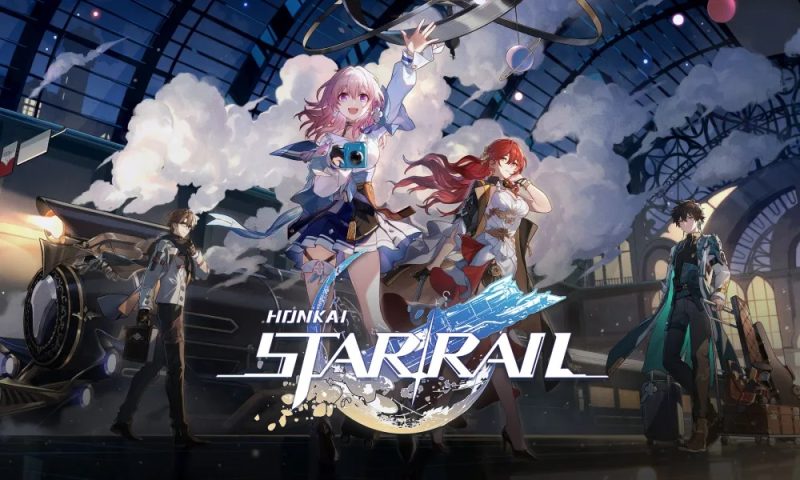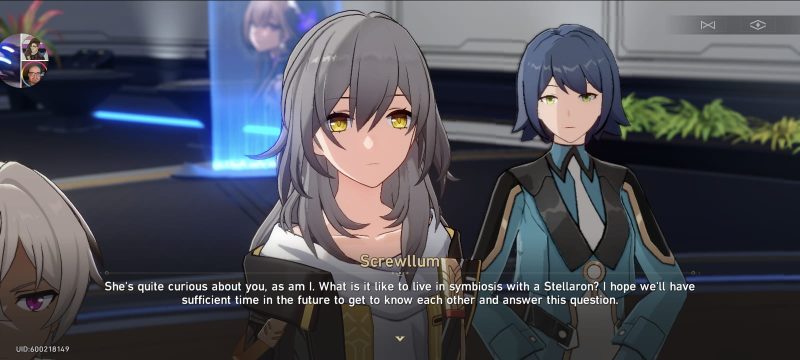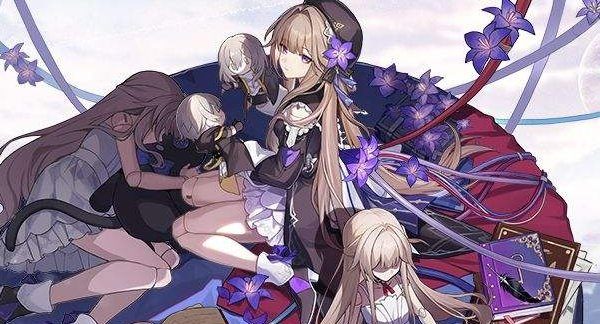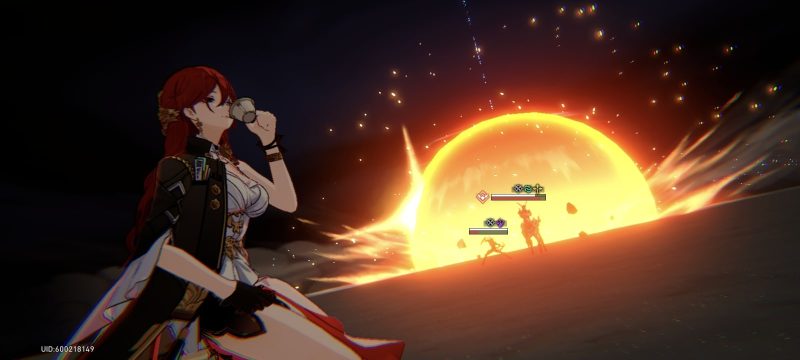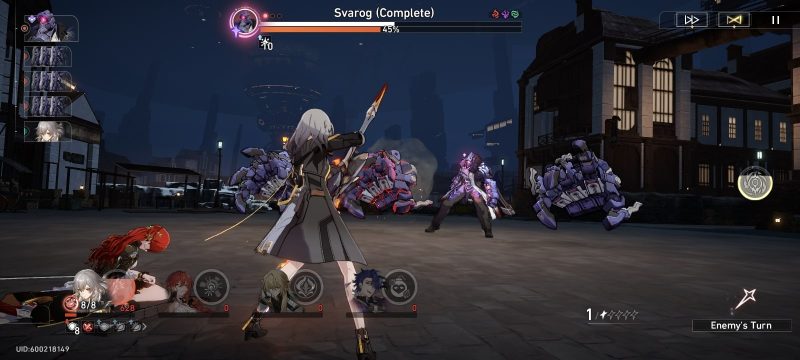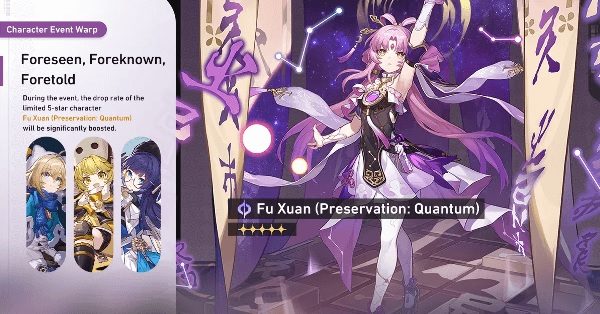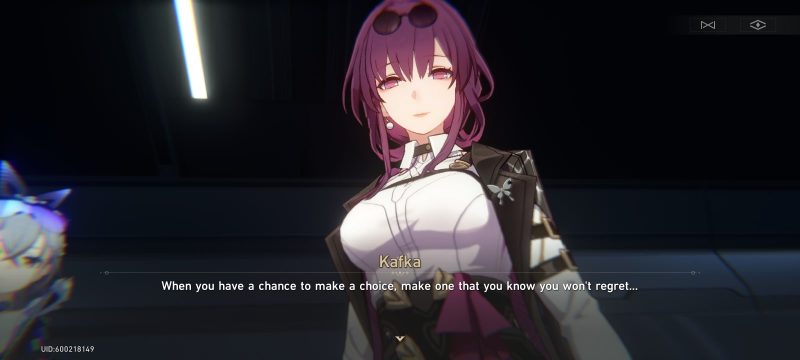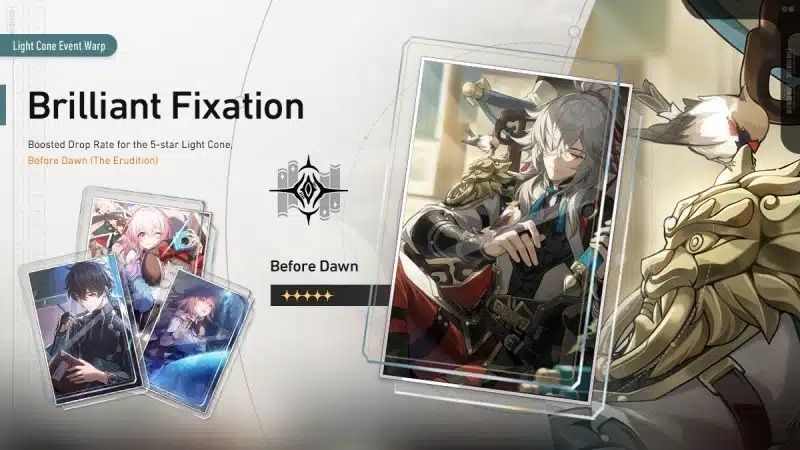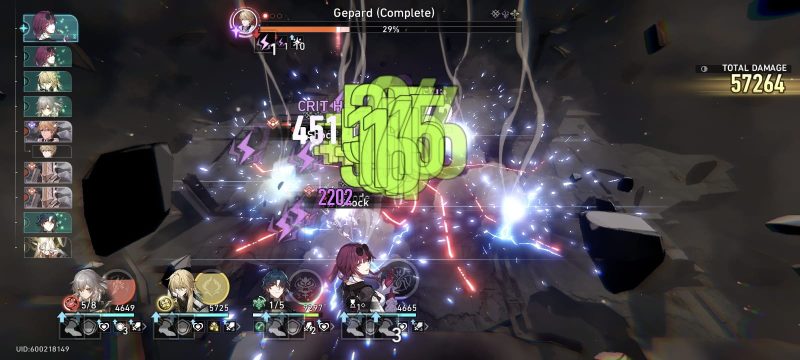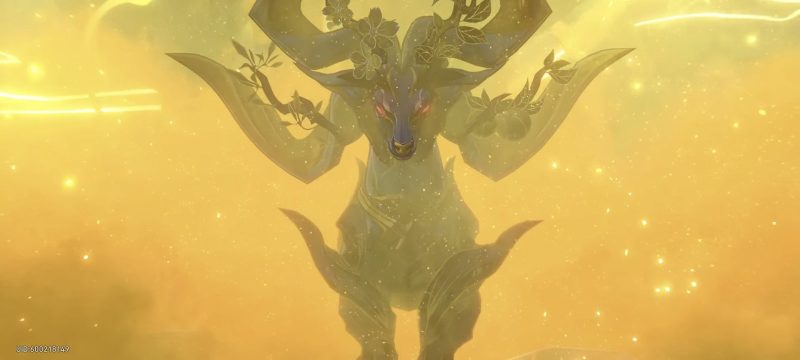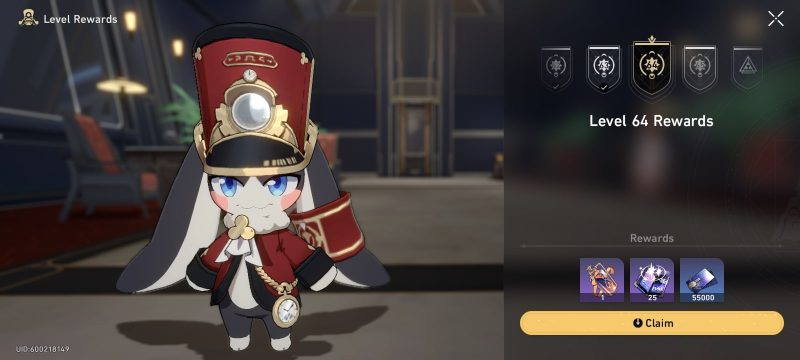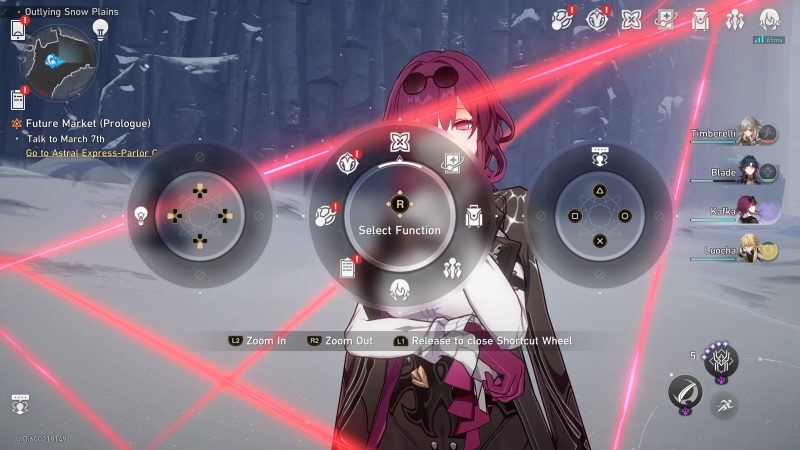Honkai Star Rail Review (PS5) – Hoyoverse is now a huge development team with a namesake that spans the globe like few others in the industry have.
Now, in wake of the success of two major games already under its belt, and the mobile version of this game already live, Hoyoverse has brought Honkai Star Rail Sony PS5.
Despite what you may think about this game, it is far from a copy and paste of its big sister game, Genshin Impact.
Honkai Star Rail Review (PS5) – The Ultimate Gacha Experience, Whether Free-to-Play or Not
The Honkai universe holds many mysteries. Perhaps the biggest one is the existence of Stellarons. These mysterious energy orbs gravitate toward random objects in the universe, which creates distortions or transformations in the object the Stellarons occupy. This then slowly adjusts the world around it, completely shifting full civilizations, ecosystems, or even planets.
What hasn’t happened in known knowledge is a Stellaron occupying a person-well, hadn’t until you, the Trailblazer, came along. To make things more interesting, practically nothing happens once it enters your chest, which also hasn’t happened anywhere else before. Common interests find you meeting the universe-trotting Astral Express, who soon requests that you join in on a journey to learn more about how to handle and manage Stellarons as well as explore the universe proper.
The obvious comparison many will make to Honkai Star Rail (HSR) is Hoyoverse’s other popular gacha game, Genshin Impact. In many ways, they share common ground. At the same time, none of those commonalities diminish what HSR does well.
For instance, the menus and character screens, outside of color and name differences, display practically the same way they do in Genshin. One distinct advantage to this is that the existing millions of Genshin Impact players don’t need to learn a new set of menus and navigation. In the world of gachas, minimizing the learning curve is a practice that’s rarely done well.
Even so, navigating the menus proves little challenge for new players as well, since they display intuitive images that represent the menu as well as universally understandable menu names. There’s no need to worry about learning random anime-esque names for things. HSR even refers to its equipment and weapons as relics and light cones, respectively; though the individual names of these items still remain quite anime.
Comparing Apples to Oranges
Apart from the aforementioned topics, a few things stand out with HSR that Genshin doesn’t do. The first one is the level of writing. Genshin approaches its prose with different levels of formality, no matter who speaks. To boot, there is always a bit of a youthful element to it all as well, opening up the game to people both young and old without generating too much parental concern.
HSR adds more verisimilitude to how each character speaks and interacts with others. Some characters are snarky, some are mean, some are aloof, but they all have their own style.
For instance, one character, Herta, the space station’s commanding AI, uses a ball-jointed human-sized doll to walk around the station and interact with people. She is very blunt and mostly dismissive of people and their situations unless they correspond with her goings-on. She also sounds borderline terse much of the time, which just works for her character. HSR shares this kind of thoughtful approach to all of its characters, especially the playable characters.
Another significant difference is that HSR doesn’t pad all of its dialogue with lengthy, wordy conversations that don’t really say much. Conversations aren’t straightforward or blunt either. They just deliver the situations more naturally and believably without overdoing it or going after a word count.
Universe-trotting
HSR is not an open-world game. Instead, you navigate small maps with linear paths. One distinct advantage to this is that finding secret items and completing quests is much easier than when exploring an open world map. Conversely, the sense of exploration doesn’t last long. Hidden paths still pop up here and there, leading you to small secrets along the way, but even those don’t yield that same sense of discovery.
Your perspective on this point depends on what you want out of the game. Thankfully, this approach lines up with what the game focuses on: combat and characters. Farming for materials is made that much easier by having all enemies in small, concentrated locations. Not only are enemies closer together, but they take less time to find, should you need specific item drops.
Outside of that, the potential for exploring an entire universe is Star Trek-levels of palpable. Not only can planets themselves be expanded, but brand new planets can be added to the fold. A world is expansive in its own right, but a universe of worlds is on a completely different level of opportunity.
Nonetheless, no matter how exciting the future looks, reviews do not cover potential. At present, there are only two planets and Herta’s Space Station to explore, with each patch adding new sections to explore and enemies to fight. One world includes a snowy terrain surrounding a city with a divide between a surface and an underground level.
Another is inspired by Japanese culture mixed with species, where different species live vastly different lifespans from each other, creating a social divide.
A Turn For The Better
Unlike its Hoyoverse constituents, HSR features a turn-based combat system. The combat system in HSR can be made as challenging or as simplistic as you like. Content itself plays a big part in this, but more on that later.
Here’s an example: All units take turns, and the attack order is based on which on-field unit has higher speed. With that in mind, having higher speed also allows that character to attack multiple times during each turn. Then you can factor in things like coordinating the speed of all your characters in order to have the support character go first to buff the attacker.
This is the complexity that you can dig into with Star Rail’s turn-based combat. At the same time, you can just put sufficient gear on them and complete enough of the game’s content to experience the story and events. Hoyoverse has always applied this approach to its games, and it continues that trend with Star Rail.
Equally so, you need to explore the inner mechanics of your characters and how they perform in combat if you plan to take on the harder content. Turn order plays a significant role in combat. If you control how many times your characters attack each turn, you win most of the time.
Conversely, you can inflict status ailments to inflict passive damage and keep your opponents from attacking. Once you command who can and can’t attack, you control the outcome.
The Gacha Element
First and foremost, any gacha game depends on what you invest in it. HSR is no different. Investment comes in either time and effort, building your characters with what you end up with, or in the form of real money. As likable as HSR is, it very much still follows the pay-to-win formula of the game type.
Equally so, you still find success if you put in the work to understand your characters and how they interact with each other as well as how they affect enemies. To help you with this, HSR gifts you several characters as you progress through the story, including damage dealers, a couple defensive options, and a healer.
Granted, to unlock each character’s true potential, you need multiple copies of them. These Eidolons expand abilities in ways that can make them comparable to the premium characters found on time-limited banners.
This is where the intent risk comes into play with gachas. The game does reward you with currency to pull on banners, especially early on. While the flow of currency slows down, the frequency of new units does not. To boot, Hoyoverse does a fantastic job of advertising its new 5-star units, making each one as appealing as the last.
This is what makes all of Hoyoverse’s games so dangerous to your wallet. Even further still, 5-star units definitely do make HSR easier to play. Hoyoverse knows how to make money on its games, and HSR follows suit.
Still, regardless of your luck with banners, you inevitably collect many 4-star units along the way to fill your roster. As mentioned before, if you learn about and understand the characters you get, you do not need shiny new ones to complete the game. All characters are viable in the right hands. Hoyoverse does a fantastic job of developing the kits for each character, whether it be a 4-star or 5-star character. Please do not forget that.
Relatively Generous For A Gacha
Now, after all that, what makes HSR a more consumer-friendly gacha game comes down to how the game handles its Pity system. For the uninitiated, the Pity for each banner is how many pulls are required to guarantee getting a 5-star unit. 90 pulls, or 9 attempts of 10 pulls, guarantees a 5-star unit.
For the first 5-star you pull, you have a 50-50 chance of pulling the featured character. For the second 5-star you pull, you are guaranteed the featured character. Once you pull a featured character, the next one you pull will return to the 50-50 chance and so on and so on. This is how the character banners in Genshin work as well.
The part of HSR that is both more appealing and potentially more expensive is the featured banner for Light Cones, which are the weapons in HSR. Each of these Light Cone banners has a 75-25 chance of pulling the featured Light Cone. However, while the Light Cone banners also have the 90-pull Pity system, they do not have the guarantee scenario.
Even if you don’t care much about the 5-star character, the Light Cones in these banners are, objectively speaking, upgrades for all units that can use them. How relatively friendly the weapon banners are is one reason why HSR is my favorite gacha game. Gacha games depend on the weapons just as much as the characters themselves.
Again, the Light Cones you collect along the way make perfectly good options. Still, the appeal and the relatively generous nature of the featured Light Cone banner makes it a bit easier to potentially strengthen your teams without massive investments or immaculate luck. It still requires luck, just like with the entire gacha system, but the chances lean in your favor more than other games.
While on the subject of Light Cones, it’s worth mentioning that Light Cones are not universal. Characters in HSR have different types, such as Abundance, Destruction, Harmony, and Nihility. Unique Light Cones are exclusive to their typing, but all Light Cones are still Light Cones. This distinction proves more challenging in the early days of the game.
The Cost of Building Teams
One area that falls short is the rate at which you can collect and farm materials. Part of this comes down to how much Trailblaze Fuel (or energy, like in other gachas) you have available to you.
Since launch, the maximum amount has increased, and the game even stores some excess if you let it build up past the maximum 240.
To make things frustrating, the amount of resources you earn from one fight is only four or five of that type. While that does include chances for different rarities of each type of item, the amount you still need to max out each character requires somewhere around 20 days of farming the same fights.
Combine that with the need for in-game currency and other items you gather along the way, the game demands a lot of resources.
In relative terms, you do not need to completely max out each character to do what you want to do in HSR. However, much of the end game content requires you to develop two complete teams of four in order to beat it. There’s a nice amount of story to experience and new events in rotations, so your time won’t be strictly for farming items.
The Grind to Max Level
Finally, your Trailblazer Level is the level attributed to your account. For everything you do, you earn experience toward it, and each level yields a reward. As your level increases, the amount of required experience increases. For the first fifteen or so levels, you develop pretty quickly.
However, once you hit later levels, especially between 40 and 60, leveling up takes a long time.
This matters simply because each ten levels grants you a slight boost in what you get from drops. This is important because higher Trailblazer levels grant you higher difficulties of each fight, which provide more leveling materials and currency per attempt.
Lower Trailblazer levels make improving your characters take even longer.
I say all of this for one reason: If you enjoy the game up until the point of the level grind, please be patient. This is the stretch of the game that will test to see if you truly enjoy the game for what it is. Still, it gets better. There are also some great events along the way to keep you entertained. It just takes a while.
It doesn’t change the frustration factors involved, but each improvement you reach makes the game just a little bit more accessible. Games like this are intended to be long-term games. I just wish that the progression could be a little more balanced or saturated on the way to max level.
Upping the Ante From Mobile
There are several areas where the PS5 version outdoes its mobile counterpart. Some are blatantly obvious, like sound and visual quality. All images and animations are crisp, clear, and vivid. Even after having played the game since launch, tons of details and animation subtleties show themselves, such as when you cast skills and ultimate’s. Everything just pops.
Audio on the PS5 surprised me. In particular, when characters narrate something they’re thinking, that dialogue sounds like it’s ever-so-slightly muffled to give the impression that it’s coming from their mind instead of their mouths. At first, it felt weird, even after having played Genshin for the last three years.
It didn’t take long to get into it and almost prefer it over what I had acclimated to. Knowing when your characters are speaking or thinking gives a unique level of immersion I never thought about in normal story-based games. Experiencing it in a gacha game like this made me realize what I had been missing in practically all games that use audio this way.
The PS5 version also comes down to if you prefer to use a controller. Much of the controls mimic what Hoyoverse implemented in the console version of Genshin Impact. One significant change to that is the ability to customize what your hotlinked submenus are in the shortcut menu. With my playing preferences, I don’t see a reason yet for me to make any changes to the default settings.
At the same time, knowing I can customize that for future situations feels empowering.
The controller also makes running around and farming materials so much more relaxing for your hands than it does on a phone. You don’t need to coordinate where your fingers go all the time on a touchscreen. However, one are where the mobile version is superior is while customizing gear.
Simple screen presses on items in your inventory is so much more simplistic than having to cycle around or use L3 or R3 commands to jump to the search filter or item detail menus, for instance. If HSR is for me like what Genshin has been for the last three years, I will undoubtedly get used to the controller layouts.
This just means I’m more likely to play HSR just as much on my phone as I will on my PS5.
Also, if you already have your PSN account linked to Hoyoverse from playing Genshin, you do not need to do it again. If you already have one, the game automatically identifies your account and logs you in.
Another Spectacle of A Game From Hoyoverse
With each big release, the team at Hoyoverse expand what a great gacha game looks like. Honkai Star Rail is the pinnacle of their vision and their experience in the industry. Star Rail is still a gacha game through and through, but the Pity systems along with the well-constructed characters make for a very free-to-play friendly experience. You just need to put in the work.
Star Rail is a game that requires a lot of time, especially when it comes to leveling your account. Maxing out characters takes a great deal of of your resources as well, which can quickly divide your time between tasks if you’re not careful.
Narratively, this is still a Hoyoverse style of game. However, the level of writing and editing put into its construction far surpass any work that Hoyoverse has done before. Combine that with deep turn-based combat and enchanting characters, you have a recipe for success.
Honkai Star Rail is now available on PS5.
